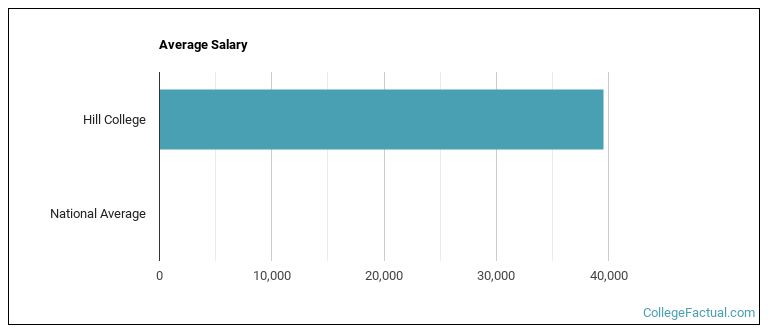 by our College Data Analytics Team
by our College Data Analytics Team
College Factual recognizes the best colleges and universities in its annual rankings. These rankings include categories for best overall colleges, best colleges for each major, best value schools, and much more.
Hill College was awarded 8 badges in the 2025 rankings. The highest ranked major at the school is corrections.
Explore the best ranked schools for the programs you are most interested in.
College Factual ranked Hill College as #1,913 out of 2,152 colleges and universities in the country on its 2025 Best Colleges list. This is an improvement over the previous year, when Hill College held the #2,129 spot on the Best Overall Colleges list.
Hill College is also ranked #103 out of 115 schools in Texas.
Returning adults and other non-traditional students may appreciate the fact that Hill College has an open admissions policy. This means that you'll only have to submit basic materials, which may include proof that you completed high school or an equivalent program.
With a student to faculty ratio of 16 to 1, Hill College is about average in this regard as the nationwide rate is 15 to 1. While this does not translate directly to class size, it's a good indicator of how much time professors will have to spend with their students on a one-on-one basis.
In addition to the student to faculty ratio, some people look at what percentage of faculty members are full-time as a sign of how much time professors will be able to spend with their students. This is because part-time teachers may not be be on campus as much as their full-time counterparts.
The full-time faculty percentage at Hill College is 44%. This is comparable to the national average of 47%.
The freshmen retention rate is a sign of how many full-time students like a college or university well enough to come back for their sophomore year. At Hill College this rate is 51%, which is a bit lower than the national average of 68%.
During the 2017-2018 academic year, there were 4,038 undergraduates at Hill College with 1,177 being full-time and 2,861 being part-time.
| $0-30 K | $30K-48K | $48-75 | $75-110K | $110K + |
|---|---|---|---|---|
| $7,788 | $7,080 | $9,577 | $12,653 | $13,612 |
The net price is calculated by adding tuition, room, board and other costs and subtracting financial aid.Note that the net price is typically less than the published for a school. For more information on the sticker price of Hill College, see our tuition and fees and room and board pages.
Almost 66% of college students who graduated with the class of 2018 took out student loans, but that percentage varies from school to school. At Hill College, approximately 37% of students took out student loans averaging $5,433 a year. That adds up to $21,732 over four years for those students.

Get more details about the location of Hill College.

Contact details for Hill College are given below.
| Contact Details | |
|---|---|
| Address: | 112 Lamar Dr, Hillsboro, TX 76645 |
| Phone: | 254-659-7500 |
| Website: | https://www.hillcollege.edu/ |
| Most Popular Majors | Bachelor’s Degrees | Average Salary of Graduates |
|---|---|---|
| Liberal Arts General Studies | 188 | NA |
| Precision Metal Working | 80 | NA |
| Vehicle Maintenance & Repair | 45 | NA |
| Fire Protection | 44 | NA |
| General Business/Commerce | 43 | NA |
| Criminal Justice & Corrections | 38 | NA |
| Cosmetology | 37 | NA |
| Computer Programming | 22 | NA |
| Allied Health Professions | 21 | NA |
| Practical Nursing & Nursing Assistants | 20 | NA |
Online learning options are becoming more and more popular at American colleges and universities. Online classes are great for students who have busy schedules or for those who just want to study on their own time.
In 2022-2023, 2,086 students took at least one online class at Hill College. This is an increase from the 2,020 students who took online classes the previous year.
| Year | Took at Least One Online Class | Took All Classes Online |
|---|---|---|
| 2022-2023 | 2,086 | 976 |
| 2021-2022 | 2,020 | 741 |
| 2020-2021 | 2,678 | 1,670 |
| 2018-2019 | 1,329 | 717 |
Footnotes
*The racial-ethnic minorities count is calculated by taking the total number of students and subtracting white students, international students, and students whose race/ethnicity was unknown. This number is then divided by the total number of students at the school to obtain the racial-ethnic minorities percentage.
References
More about our data sources and methodologies.